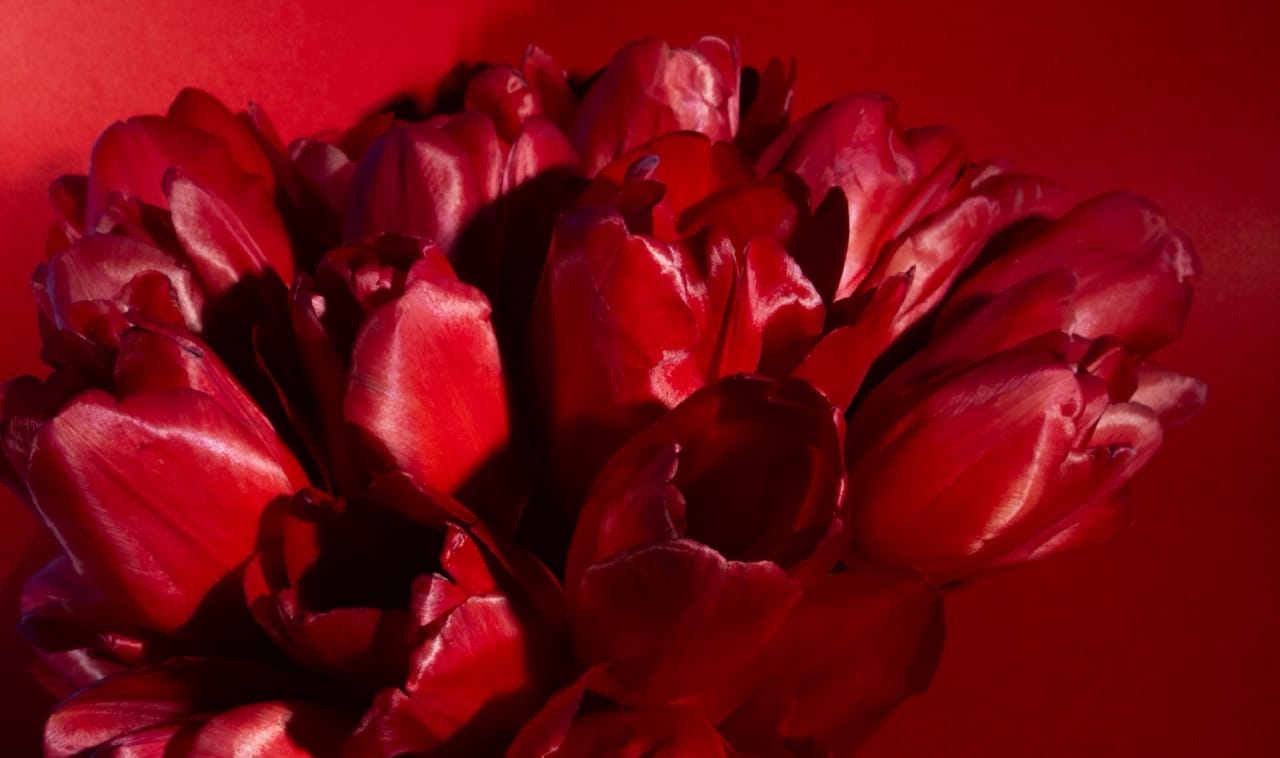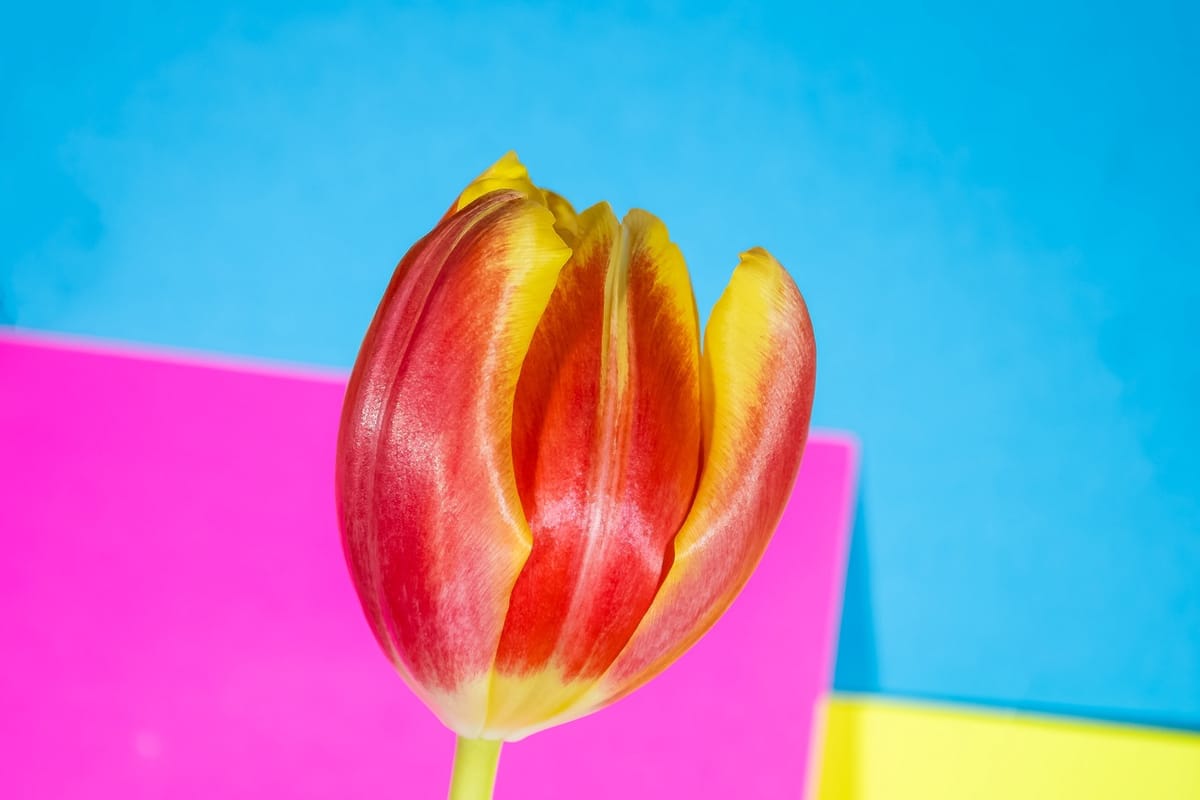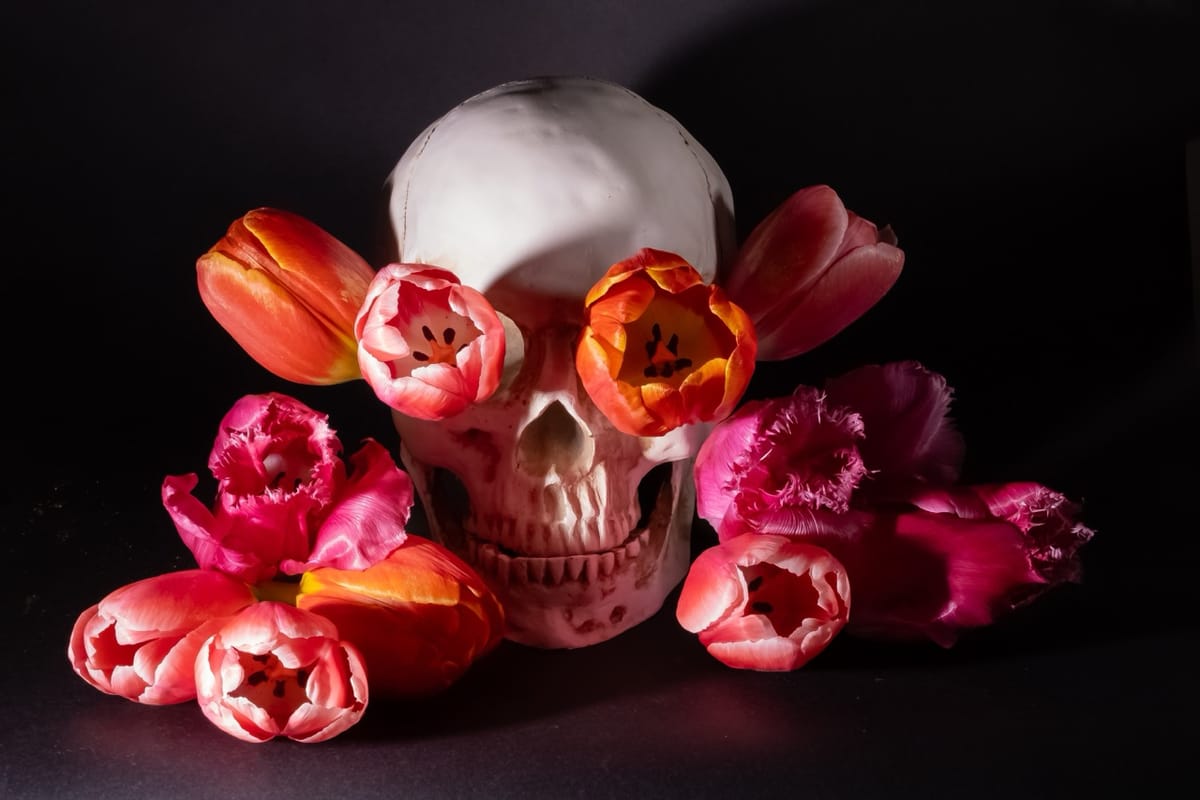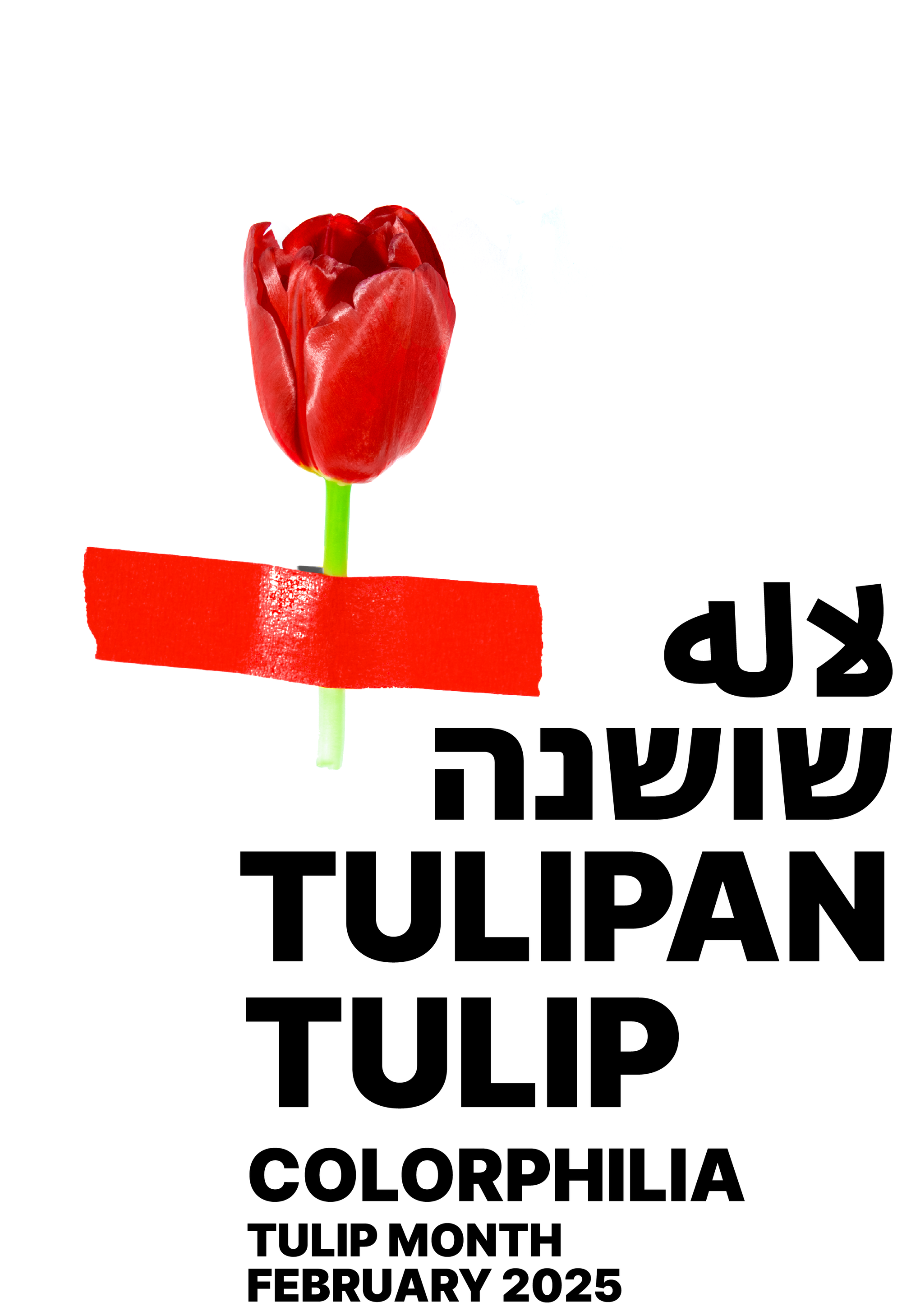Tulips: the first 3000ish years
Tulips have a much longer and more illustrious history than we previously thought.

After spending the past six weeks researching tulips in different time periods, languages, and cultures, I feel like I need to set the record straight about tulips.
If you know anyone named Shoshana, Susanna, or Susan, please let them know that the flower associated with their name is the beautiful tulip, not the common lily or some anonymous wild flower.
It was associated with King Solomon, wisdom, and wealth. Even the color-word for the tulip in ancient Persia (lale) is derived from the meaning of beauty and luxury in ancient Assyrian.
And if you don't read past this paragraph, I also implore you to read Song of Songs (Canticles) with shoshana translated as a red tulip, not a lily.
Headlines
Nowruz
In honor of upcoming holiday of Nowruz: Tulips are historically from ancient Susa, originally the capital city of Elam (Susiana), which was conquered by Cyrus the Great from the Medians, at which point it became part of the Persian Achaemenid Empire, which is associated with Shush, a city in modern day Iran.
The red tulip, or the Lale, is celebrated as the color of Spring. (See below for the etymology of the Persian word.)
Purim
The discovery is closely related to my assertion that the tulip is the flower referred to as שושנה ( shoshana / susanna ) in the Song of Songs and other biblical books.
This name would be an eponym derived from word שושן (Shushan / Susa), the Hebrew version of the word mentioned above, which is usually associated with the Book of Esther and the upcoming Jewish Holiday of Purim. As you'll see below, this whole theory isn't simply based on the similarity of the words.
While Purim is usually a time of frivolity and fake announcements, I would like to underscore that Colorphilia does not canonically have a sense of humor.
The rather boring likely origin of the word tulip
And finally, to get the announcements out of the way. the likely true origin of the word “tulip” is rather straight forward and quite obvious: It is from the Persian phrase do lab which literally translates to “two lips”.
That name was subsequently Latinized to tulipan (at some unknown date), which resulted in the creation of the King Midas myth from I published from earlier this month. Just as in the case of Narcissus, the name of the flower came first.
What is a tulip?
As you will see below, there are number of related arguments that I am making. So therefore we need to understand how the various parts of the tulip has been perceived throughout the ages, beyond simply the color.
While we've all become obsessed with the image of the open tulip, the closed flower is somewhat unique because its petals remain upright and protect its stamen.
- Tulips look like cups. And not only that, but there are more than a dozen different tulip glasses, depending on the type of beverage you are looking to drink. In all of them, the cup's lip is more narrow than its bowl.
- Tulips look like lips, especially the red ones.
- Tulips look as if they surrounded by fabric. This is also connected to the tulips looking like hats, but we aren't going to get into that this time.
- Tulips are flowers of springtime.
Why translate Tulip as Shoshana
To quote a footnote from the brilliant biblical scholar and translator Robert Alter for Song of Songs 2:1, “like a good many items of biblical flora, the identification of these two flowers remains uncertain, so it seems sensible to follow the traditional English equivalents [of rose and lily] here, which may be as good a guess as any others.” (bracketed italics added for clarity)
What has shoshana been traditionally translated as?
- Historically, shoshana has been translated as the lily, often requiring quite creative mental calisthenics to explain the phrase's meaning. For example, I skipped translating Cant. 5:5 the previous time I quoted the same section in the newsletter, because the phrase "his lips are like lilies", makes absolutely no sense. One commentator tries to connect it to describing a statue.
- Shoshana was initially translated as κρινον (krinon) in the Septuagint, a word likely derived from κρεας, or flesh, a cognate of carnation, or red. The original translator was aware of the color relation, and used the literal translation to describe the flower.
One of the first places where people try to associate and mistranslate κρινον is in Herodotus, as he is writing about the flowers indigenous to Egypt. He first mentions the lotus and then a rose-like flower, using κρινον to describe both.
Both are varying shades of flesh-tones, or what we would call “red”. For more examples of flesh as a color, read the Colorphilia newsletter about ballet shoes.
Neither of the described flowers are the tulip, though, which is also one of the admitted difficulties of translating every flower with the description of lale as a tulip. - The initial error happened likely when the Persian lale was conflated with Latin lillium, a completely different flower. For the sake of clarity, that is not the only time that a lillium word was conflated with another word, and I’m talking about the fleur de lis here.
It is difficult as a modern reader to ascertain if a mentioned lily is white, as Shakespeare would have said, or yellow, as the fleur de lis originated. Adding the color red to the mix doesn’t make things any simpler. - In Luke 12:27, Jesus says “consider the κρινον.” He continues to compare them to the Solomon and uses the word περιεβάλετο (periebaleto, literally to place around) to describe how the fabric falls on the flower, and it has the connotation of being wrapped, not just worn. (This is also echoed in Matthew 6:28-30.)
What is fascinating about this is that we only have the Greek sources for Luke and Matthew, but it is obvious from the connected to Solomon and red fabric that the readership knew that the original word was shoshana, and not some random "wild flower" as many bibles translate it.
The Color of the Shoshana
The shoshana should be red, and that shouldn't be a discussion.
The first clue that something was wrong should have been when the shoshana was compared to lips in Song of Songs (5:17).
Lips are red, and it is a very color-forward section. Some commentators on Luke have the same comment regarding their tradition of the red color of Solomon's robe.
The Shape of the Shoshana
We are first introduced to the shoshana in 1 Kings 7, in which King Hiram of Tyre is commissioned by Solomon to design his house, and proceeds to design the bronze columns with the top being similar to the “cup-lip of the shushan flower”. It was then over the course of the King Solomon's reign that they dropped the word "flower", and just referred to it as the shoshana. And we see how King Solomon becomes associated with the flower.
The 2nd century Aramaic translator Onqeles uses the shoshana to explain the anonymous flower blossom in Numbers 8:4, in which they describe how the Menorah of the Tabernacle was to be constructed.
Ironically, 19th century archeologists were stymied while excavating Susa, as they didn't find pillars with lily patterns. They misunderstood Hiram's inspiration, it was the flower, not some feature of Susan architecture.
The Origin of the Shoshana
Reading Shoshana as "from Susa / Shushan", helps strengthen the exotic nature of the newly discovered flower. While this is a less obvious reading, the shoshana is found in a number of lists, which feature eponymous products from around the world, like Lebanese Cedar, the Tarsus stone, and Indian olives.
Mentioning where all the items are sourced or imported from, and that they are not indigenous to the region, highlights the perception of wealth and exclusivity. When we remove the origins from the translation, we lose the flavor the original audience appreciated.
There exists a non-obvious Jewish etymology myth about the shoshana as well, and that is the apocryphal Book of Susanna. It is the antithesis of the Narcissus story, and highlights the Persian connection through the inclusion of Daniel, whose ultimate burial place is purported to be in Susa.
The story highlights Daniel's wisdom, in a narrative that mirrors the "Solomon threatening to split the baby" story. The fact that the eponymous heroine of the story wears a veil, and she spends time every day in the garden, helps underscore the floral origins of flower.
But is this the tulip?
With these things in mind, I would like to assert that the biblical shoshana is named after a red flower which originated in the city of Susa, which was reminiscent of lips and is shaped like a cup. It is also closely associated with the wisdom and wealth of King Solomon and the creativity of King Hiram.
I can also say that it is very obvious that the Jewish Andalusian poets of the 10th - 12th centuries assumed a connection between the shoshana and Susa (Shushan), in both explicit and implicit ways.
Was King Solomon the original Tulipmaniac? Would he have become a paid subscriber to Colorphilia?
History of the Lale
Tulips were historically red, and in the different iterations of the Persian language, the flower has been called لاله (lale), ostensibly due to its primary original color, red, لال (lâl). The word lale was then used in a number of countries, such as Turkey and Macedonia. (It should be noted that there is some confusion, for example with Afghanistan and their national flower which is either the tulip or the poppy, depending on the language, but both being red.)
11th Century Persian Poetry
While exploring the poetry of 11th century Persian poet, Omar Khayyam, I learned that lale are a symbol of spring, and central to the celebration of Nowruz. But more than that, I learned that they were compared to cups (goblets) and red lips, and connected to rubies (also lâl) and some sort of red wine (either from grapes or pomegranate) described as badeh-lal, or literally ruby red wine, with tulips appearing like glassed filled with red wine.
So we know that there is a red flower in both modern Iran and medieval Persia called the lale that was shaped like a cup, that was also associated with red lips. Where is the name originally from, though?
Ancient Assyrian Language
As earlier dynasties of rulers had used the Assyrian language, I explored the University of Chicago's 26 volume Assyrian dictionary, and discovered something fascinating.
The word lalû was associated with physical beauty, luxury objects, sumptuous decoration, and abundant vegetation. With regard to the last one in the list, I found a fascinating quote in the dictionary:
arqū dešûti la-la-a musarê inbī ruššûti šumuh șippāti
abundant vegetables, the delicacies of the garden, red-glowing fruit, the pride of the orchard
- "lalû" - The Asssyrian Dictionary, Volume 9, p.51
Even millennia later, Omar Khayyam had only used to the word lâl and its related words to describe items of luxury and beauty. The word ruššûti was connected to color red, namely shades of gold and bronze, and "divine and royal radiance".
It's almost as if the lâl was initially alongside a color word or some other description, and they all fell away, and lâl became associated with the color of the Persian spring, the vivid beautiful scarlet red tulip.
(Re)considering the Tulip
If the shoshana is in fact the lale, then wer have to reexamine the bias and the misinterpretations which were based on our previous understandings.
Song of Songs 4:3
Song of Songs explicitly celebrates Spring and nature. 2:11 - 2:13 is unequivocal about that. Verse 4:3, which mentions the imagery of the pomegranate being split open, is exactly what you would expect from a poet walking through a garden in search of inspiration.
What is the line "your lips are like a scarlet thread" doing there? If scarlet lips were simply a euphemism for tulips, then it contentualizes that the poet noticed tulips and then a smashed pomegranate, and took inspiration from both.
What is the purpose of the thorns?
I honestly have never understood Song of Songs 2:2. Regardless of what flower is being discussed, thorns don't feel like they add to the narrative. The following verse is talking about a fruit tree among all the trees of the forest. It doesn't have to refer to the other trees in a derogatory manner in order to highlight the positive aspects of the fruit tree.
But if the translators of the Septuigant were familiar with Herodotus, then the existence of a Persian flower can be connected with Persian history.
According to Herodotus, Cyrus started his “hearts and minds” campaign among the Persians (before taking on the Mideans), by asking them to all come to a field filled with thorns with scythes, using the same Greek root of ἀκανθῶν (akanthon) to describe the thorns as it does when placing the shoshana among the thorns in Song of Songs 2:2. The same story, which juxtaposes work and luxury, reverberates when reading the passages in Luke.
But that's assuming that the word חוחים (khokhim) actually means thorns. It is nearly impossible to ascertain its meaning from context.
Reading #1
One way to read this, with the help of the Assyrian dictionary, is that it could be referring to plum trees. Such a reading is assisted by II Kings 14:9, where we see the King of Israel sending the King of Judah a letter saying that a חוח (khokh) from Lebanon sent a cedar from Lebanon a request to have their children marry, and the former was trampled by wild animals.
A thorn wouldn't have the gall to consider itself equals (or even the same species) as the mighty cedar. But the plum tree may. And that plays back into the narrative that we have a poet who is walking through a grove of purple-hued plum trees, and notices a solitary red tulip standing out.
Reading #2
Another connected definition of חוח (khokh) is copper rings. If we are talking about actual thistles, maybe it is referring to the golden thistle, also known as the Mediterranean Scolymus. We may be talking about a beautiful tall crimson tulip surrounded by smaller golden yellow flowers. It means the color of the shoshana is relevant here. If it is actually a white (or yellow) lily, what is the poet treally trying to convey?
And there is the additional understanding that the tulip is "modest", while all of the other flowers have all of their reproductive stamen out in the open for any pollinator to enjoy, the tulip remains demure.
Conclusion
When I began researching tulips for Colorphilia Tulip Month, I did not expect to end up discovering such a long history of cultivated tulips, roughly 2000 years earlier than the currently generally accepted theories.
During the last 500 years, I've only noticed a handful of instances where someone suggested that the shoshana is the tulip, or even mentioned the possibility.
But with respect to Professor Alter's comment about suggesting that any guess is "as good a guess as any others", I think that there is a surfeit of linguistic, contextual, and historical evidence which supports the red Persian tulip as the logical translation for the shoshana.
This theory doesn't rely on ambiguous "unknown; presumedly of foreign or substrate origin." sources, or assumptions that come through assuming that people named the flower after cheeseclothes. Every single time I encountered such a claim during the course of this research, I ended up discovering a perfectly logical explanation.
Happy Purim! פורים שמח!
Nowruz Mubarak! نوروز مبارک
Colorphilia Tulip Month - February 2025







